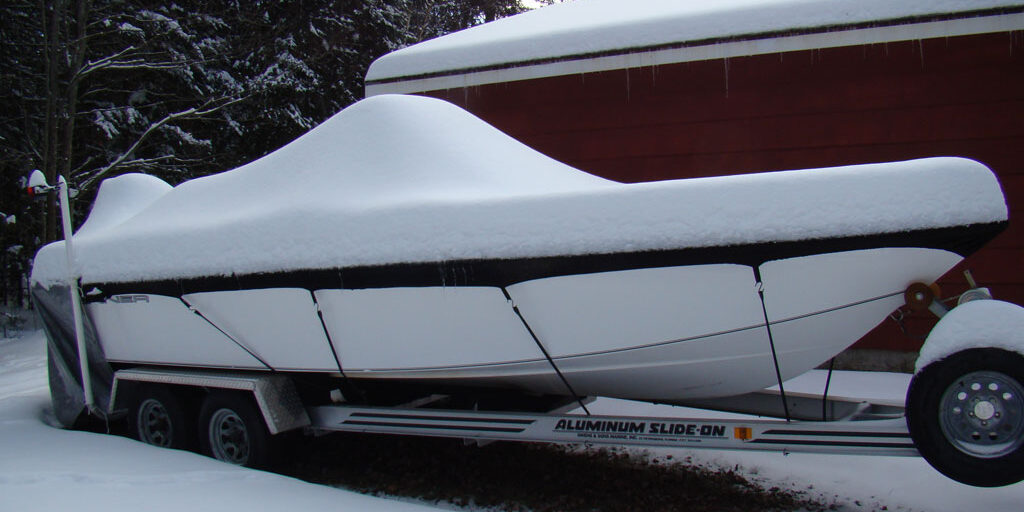Tips to Help Your Boat Make it Through the Winter
Step One: One Last Trip
Before anything else, you need to take your boat out for (at least) one last trip. Make a list of the things you want to repair, replace or modify. Once the list is complete, convert it into a schedule of projects to do this fall, this winter and next spring.
Step Two: Unpacking
Remove as much gear from the boat as possible. Remove fire extinguishers so they can be inspected over the winter before replacement in the spring.
Step Three: Cleaning
With all that gear out of the cabin, thoroughly clean from front to back. Wipe out the lockers and drawers.
Step Four: Air it Out
Once the boat is cleaned, remember to leave the interior doors and lockers open so that air can circulate. Consider putting moisture and odor absorbers such as DampRid or ZoneDry just before you close up the boat.
Step Five: Engine System
Winterizing your engine and systems comes next. Start by topping off your tanks (not more than 7/8 full to allow for expansion in the spring) and stabilizing your fuel. After adding it to the fuel, run the engine for 10 minutes or so to be sure stabilized fuel circulates throughout the engine. If you don’t stabilize the fuel, carburetors and fuel injectors can be clogged with varnish deposits that ruin fuel systems. Cost if you do: $5 to $10. Cost if you don’t: $250 to $1,200.
Change your engine oil and replace all the filters. Check the coolant in closed cooling systems for the proper degree of protection. Check the hoses, belts and clamps. Make sure all your thru-hulls open and close, and then leave them open. Clean your strainers. Check with your local authorities about how to recycle your used oil, filters, used coolant and and absorbent pads.
Step Six: Fog the Engine Cylinders
Aerosol fogging solutions coat the inside of the engine to protect it until spring. Each engine manufacturer makes proprietary products they promote as ideal for their engines. Hook “ear muffs” and a garden hose to the engine, start it, and then spray the fogging-solution lubricant directly into the air intake until it’s gone. If you don’t fog the engine cylinders, corrosion can form inside the engine, covering the cylinders, pistons and rings with a patina of abrasive crud. Cost if you do: $5 to $15. Cost if you don’t: $2,500 to $15,000 (or more).
Step Seven: Drain the Engine (for inboards and stern-drives)
If you don’t drain the engine, water in the cooling chambers can freeze, expand and crack the engine block and manifolds. Cost if you do: $0. Cost if you don’t: $5,000 to $20,000.
Step Eight: Change the Oil
Change engine oil to eliminate moisture and prevent corrosion. If you don’t, moisture can cause excessive wear, which can lead to loss of power, poor fuel economy and possible engine failure. Cost if you do: $30 to $75. Cost if you don’t: $500 (in extra fuel) to $20,000 (engine failure).
Step Nine: Drain the Gear-Case Lubricant (and recycle it)
Clear, amber-colored lubricant means your gear-case seals are in good shape. Milky and sometimes lumpy oil means the seals need to be replaced. Tip: The time to do this is in the fall when marine mechanics are less busy and sometimes willing to offer special prices for winter work. Cost if you do: $10. Cost if you don’t: $2,000 to $6,000.
Step Ten: Head to the…well…Head
Flush your head with plenty of fresh water and pump out your holding tank. Run non-toxic antifreeze through the intake lines (don’t just dump it down the bowl), the y-valve, macerator and discharge hose.
Step Eleven: Water Tanks
Completely drain your fresh water tanks and water heater (turn it off first). You can add non-toxic antifreeze directly to your water tank and pump it directly through your hot and cold plumbing.







